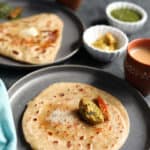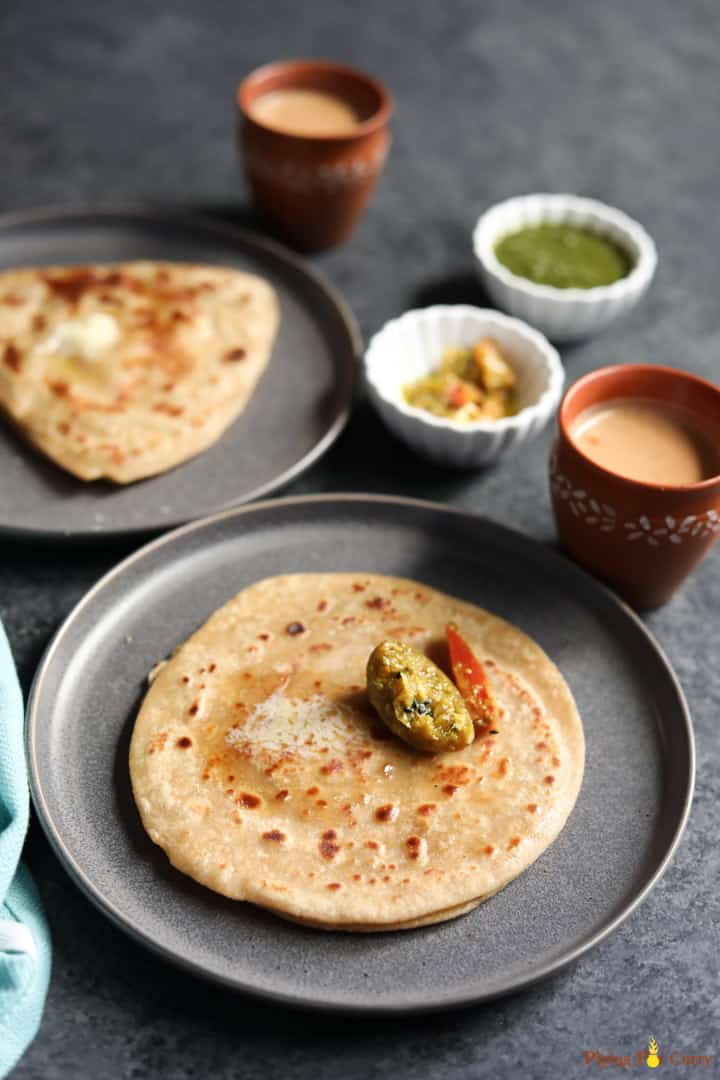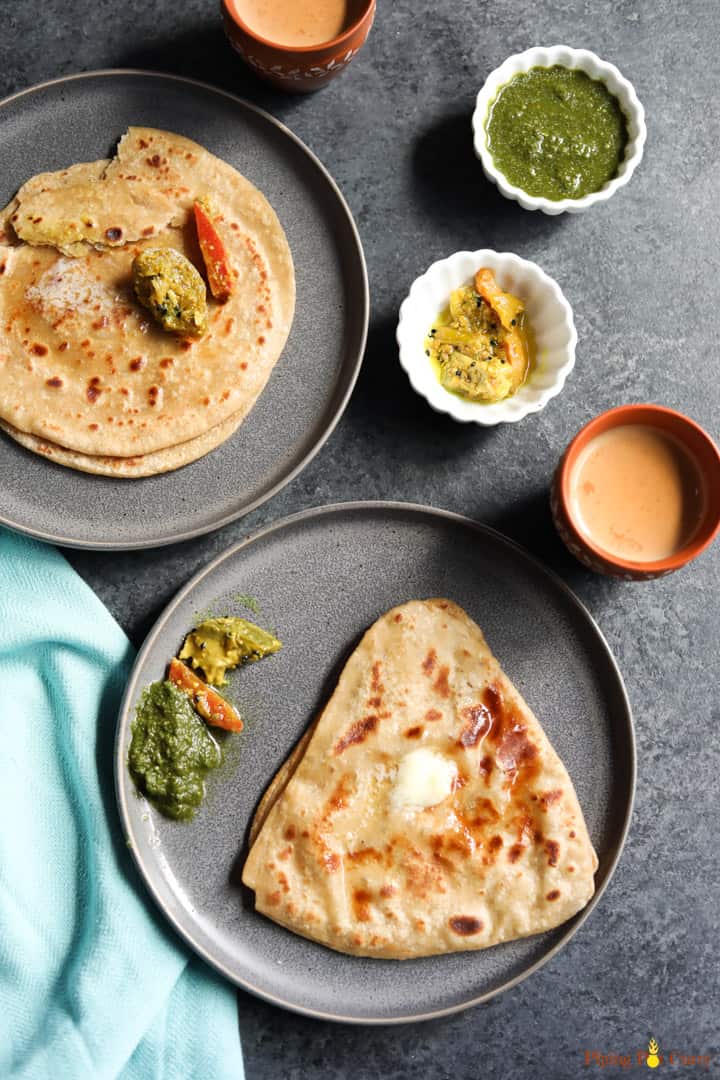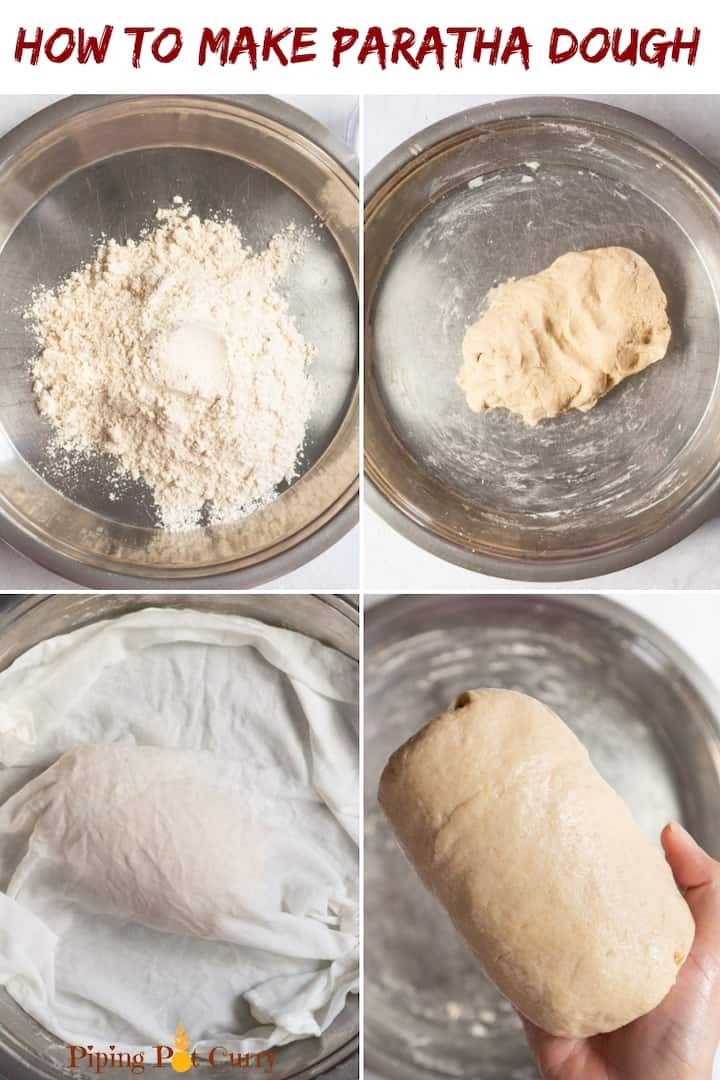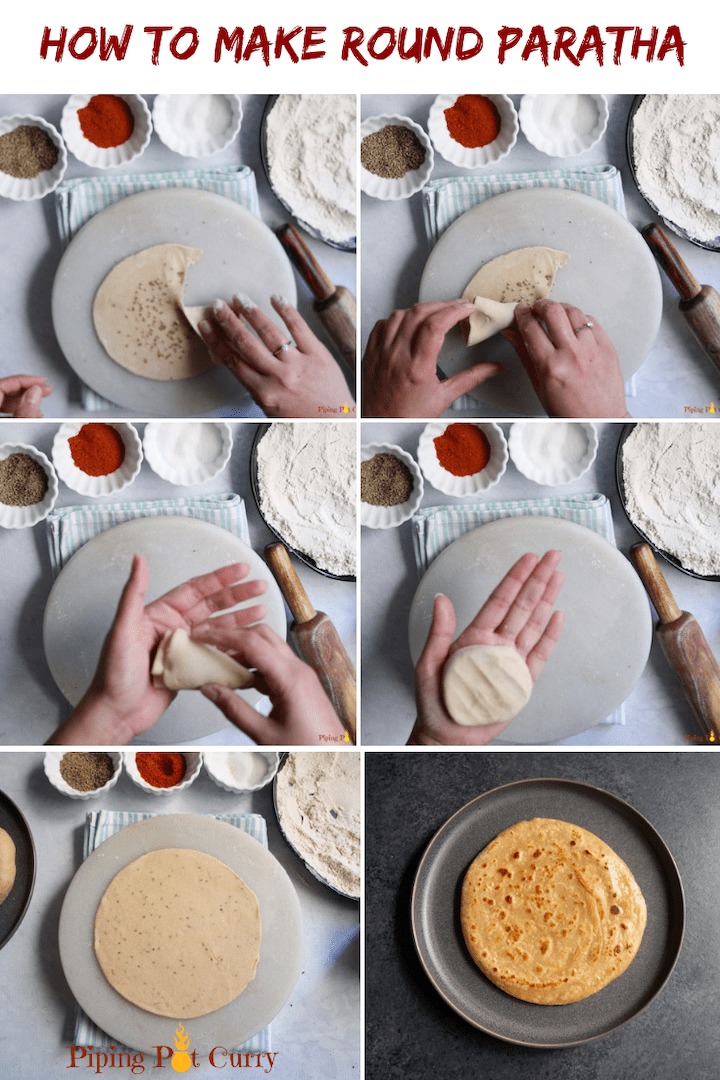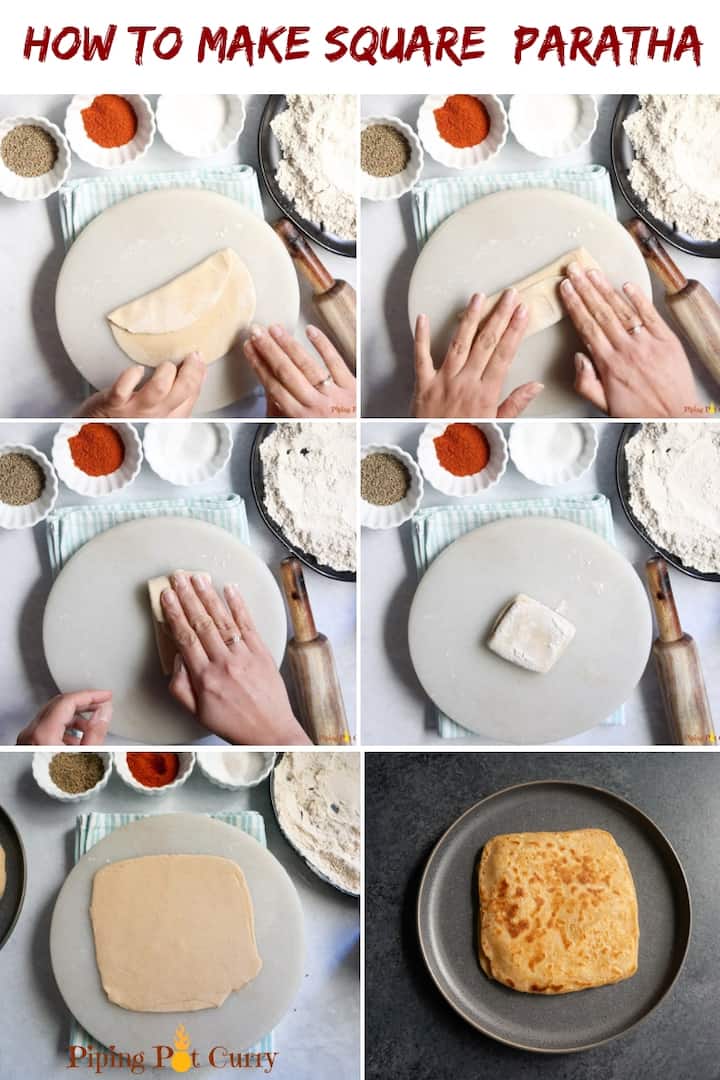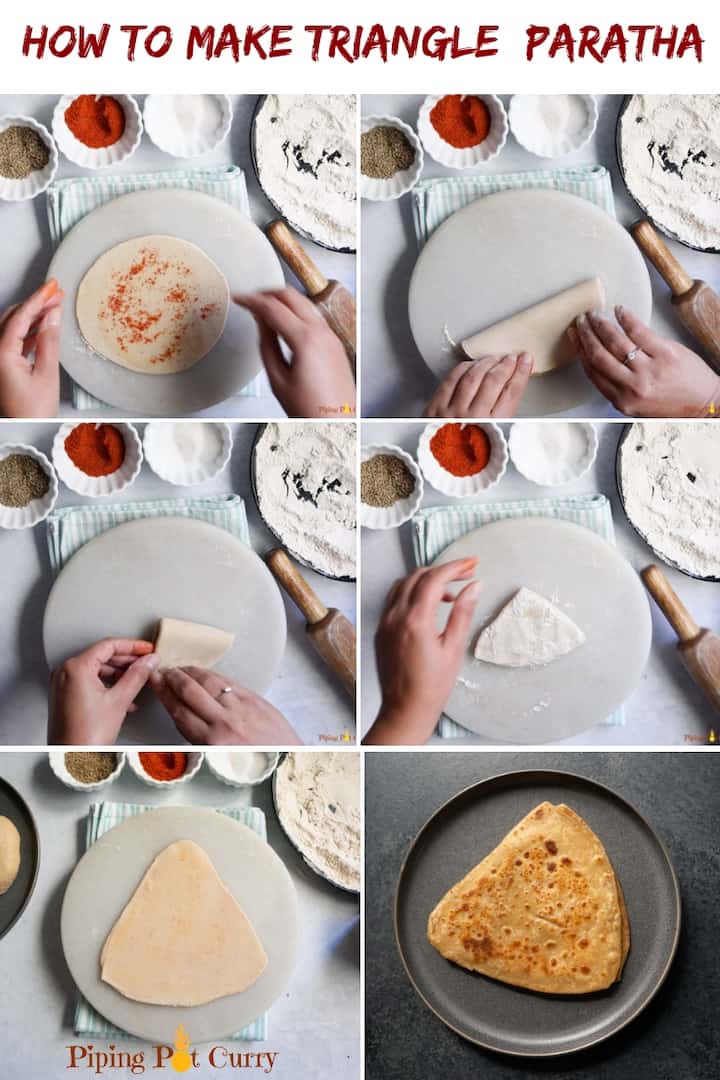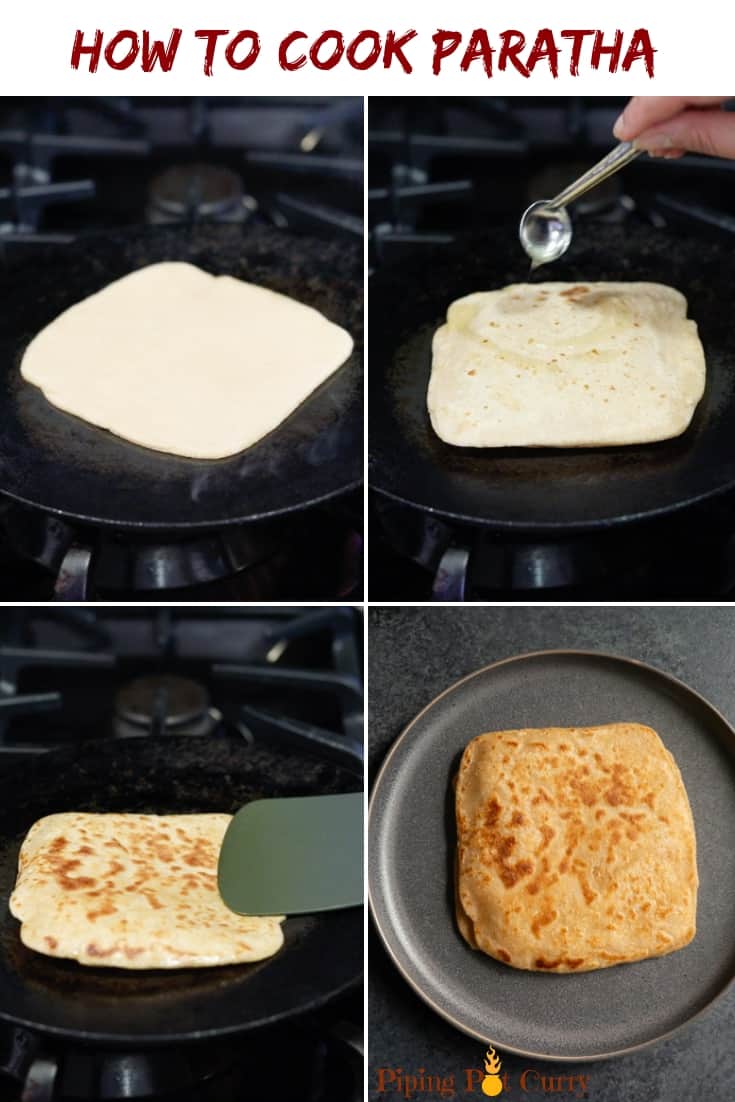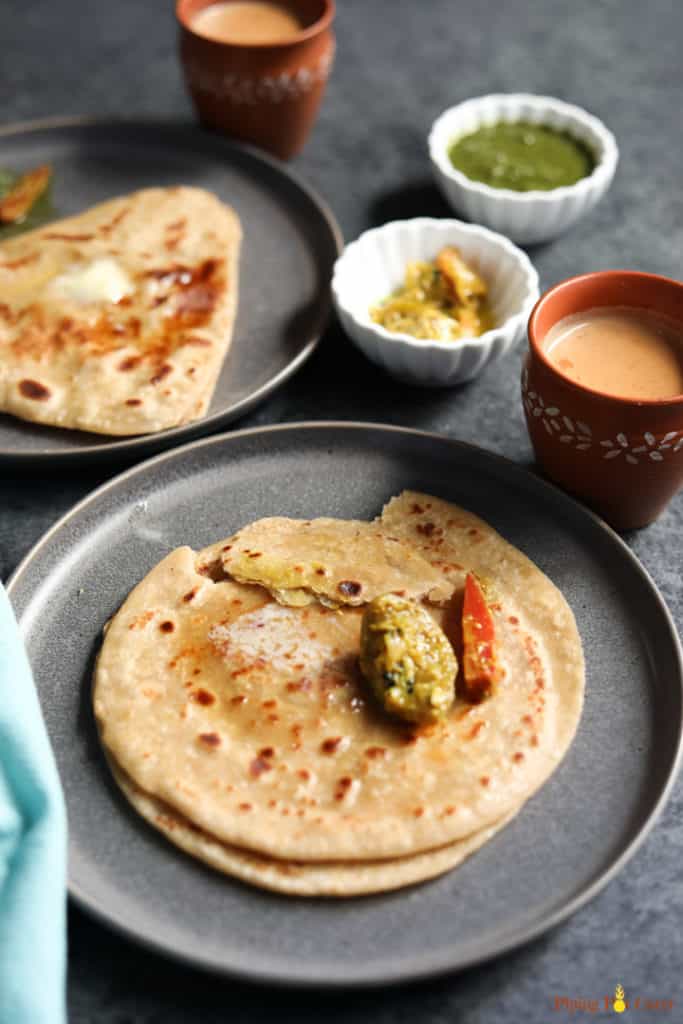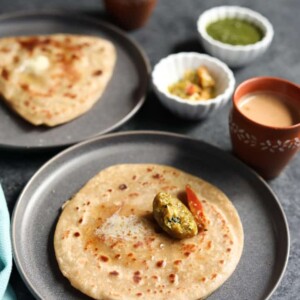They are enjoyed with pickle and a hot cup of chai for breakfast or alongside curry and yogurt raita for lunch or dinner. Learn how to make perfect parathas every time!
I recently shared the recipe for roti/chapati, one of the most popular Indian flatbreads enjoyed for lunch or dinner. If I have to say the next most popular flatbread in Indian cuisine, it would definitely be Paratha.
Parathas can be made plain, spiced, or stuffed with veggies, paneer, or even with minced meat. In this recipe, I will share step-by-step how to make plain parathas in 3 shapes – round, square, and triangle.
When I would visit my grandparents in North India every year as a kid, my favorite breakfast would be paratha, topped with lots of butter and tangy, spicy anardana masala (pomegranate powder). Elders would enjoy this with chai, and kids with a cup of warm milk.
Some days, it would be aloo paratha. Another day, gobi paratha or methi paratha, or mooli paratha, and yet another time, paneer paratha. Now, we also love to make broccoli paratha.
Parathas are also great to pack in tiffin for lunch, especially for toddlers and kids. They keep soft for longer. I usually cut the paratha into eight pieces, similar to a pizza for my daughter. This makes it easy for her to enjoy parathas as finger food during lunch.
Watch How to Make Paratha (Pan-fried Indian flatbread)
What is Paratha?
A paratha (parāṇṭhā) is a flatbread that originated in the Indian subcontinent. Parathas are one of the most popular unleavened flatbreads in India. Plain parathas are made with whole wheat flour that is kneaded using salt, oil, and water. The dough is then rolled into a layered flatbread, cooked on a tawa (griddle), and finished with shallow frying with ghee or oil until golden brown spots are on both sides. Parathas are thicker and more substantial than roti/chapati. This is because they have been layered by coating with ghee or oil and folding (similar to the method used for puff pastry) or stuffing veggies or meat in the dough. Usually, the paratha is eaten with dollops of white butter or ghee on top of it. In North Indian or Punjabi parathas, we apply ghee or oil before layering the paratha. You could also call this ghee paratha. Sometimes, we add some Ajwain (Carom seeds), along with the ghee, to make Ajwain paratha. Ajwain is a great addition to paratha as it helps with digestion and is rich in fiber, minerals, and vitamins. You can add salt and or red chili powder (or other spices) when applying ghee to the paratha. Depending on who you are making it for, I make the paratha with spices or just plain. For my daughter, I add lots of ghee and add salt. For myself, some ghee, salt, and red chili powder. You may call this Masala Paratha.
Is Paratha Vegan?
It is made with whole wheat flour, water, salt, and oil. Simply replace the ghee in the recipe with your favorite vegetable oil.
Which flour is best to make Paratha?
After trying many whole wheat flours from Indian grocery stores, I prefer Sujata Chakki Atta or Aashirvaad Select Sharbati Atta or Aashirvaad Whole Wheat Atta. I have also tried to make whole wheat flour at home from wheat berries using a grain mill (Nutrimill), and it works great to use the flour for making paratha. It is a bit more coarse than store-bought flour.
How to make paratha dough?
To make dough using a mixer, check out my recipe to make roti/paratha dough using kitchenaid stand mixer.
Possible issues with paratha dough –
If the dough gets too sticky, add a tablespoon of flour and knead again until all the flour is absorbed. If the dough gets too hard, it means less water is added. Add a tablespoon of water at a time and knead again. The dough should be soft enough that if you press your finger against the dough, it leaves an impression.
Check out the recipe to make Paratha Dough using an electric stand mixer.
How to roll parathas?
What do you need to make paratha?
Keep the rolling board and rolling pin ready. Keep a bowl of dry flour and a bowl of ghee to apply on the paratha. If you want to add salt, ajwain, or chili powder, keep that ready. You want to roll and cook the paratha simultaneously so the rolled dough does not become dry.
Steps to roll layered round Paratha
Steps to roll layered Square Paratha
Steps to roll layered Triangle Paratha
Note: Even though I share all the shapes, rolling the dough evenly to the same thickness is the most important. A uniform shape looks good but is not required to make perfect soft and flaky parathas.
How to cook soft and flaky parathas?
I usually keep the paratha on a paper towel or a thin cloth on a plate after cooking. Optionally apply ghee or butter and keep stacking them. Then, store in a hot casserole until serving (within a few minutes or an hour). Parathas are best served hot!
Tips for soft and flaky paratha
Knead the dough well; it should not be too hard or too soft/sticky. Let the dough rest covered with a damp cloth for 15-30 minutes so the gluten is released and it becomes more pliable. Roll the dough with soft hands, applying equal pressure on all sides. You might need to use more dry flour when learning to make paratha. But always dust off any excess flour before cooking on the Tawa. Otherwise, the dry flour can make the paratha dry. As you get experienced, only apply dough once and roll the paratha. Making paratha needs lots of practice. So be patient and keep practicing.
How to store Paratha and dough?
Storing Dough: Refrigerate in an air-tight container and use within 1-2 days. After about two days, the dough color starts to become brownish on the outside. To make paratha, get the dough to room temperature before using (else it might seem harder to roll) Storing Paratha: Cooked paratha can be refrigerated for 2-3 days. They might stick together due to the ghee. So let them come to room temperature or heat to separate them. You can also store it in a freezer for longer shelf life. Place parchment paper between them and then in a freezer bag like Ziploc. Note: It is hard to get them to be the same soft and flaky as freshly made 🙂
How to reheat paratha?
Microwave: Keep on a paper towel and heat for 5-10 seconds. Stovetop Tawa: Heat each side until the paratha is soft again. Apply some ghee to make it fresher tasting.
How to pack paratha for lunch in a box?
Do not pack hot off the griddle paratha in a closed box. It will get soggy. Place the cooked paratha on a paper towel and apply ghee/butter. Let it cool a little (not completely). Then, pack in an aluminum foil along with the paper towel.
Pair paratha with any curry or lentils. Here are a few favorites:
Chicken Tikka Masala Saag Paneer Potato Curry (Aloo Rasedar) Matar Paneer Masala
